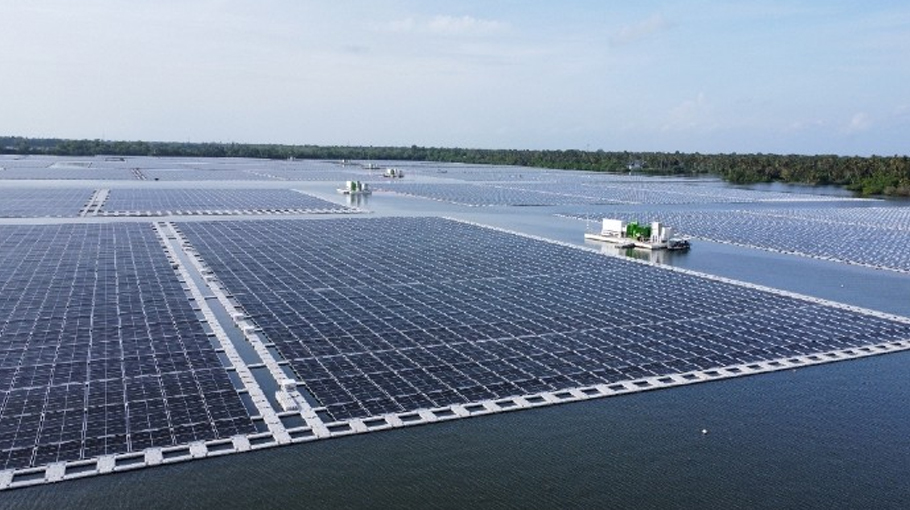India surpasses Japan to become 3rd-largest solar power generator in 2023

A significant contributor to India's solar energy expansion is the potential to exploit floating solar photovoltaic (FPV) technology
In a significant milestone for renewable energy, India has overtaken Japan to become the third-largest solar power generator in the world in 2023, according to a recent report by global energy think tank Ember. This achievement underscores the rapid deployment of solar energy in India and reflects the nation's determination to combat climate change while meeting rising electricity demands.
The report, which highlights India's ascent in the global solar power landscape, says the country now generates 5.8% of its electricity from solar power, surpassing Japan and ranking only behind China, the United States, and Brazil. According to the report, India was ninth in solar energy deployment in 2015, but ambitious policies and consistent investments have propelled the nation to the third spot in less than a decade. In 2023, solar energy accounted for a record 5.5% of global electricity production. In India, solar energy's contribution rose from 0.5% of the country's electricity in 2015 to 5.8% in 2023. This rapid growth aligns with global trends as solar power maintains its position as the fastest-growing electricity source for the 19th consecutive year. India's remarkable achievement is attributed to several factors. The country recorded the fourth-largest increase in solar power generation globally in 2023, with an addition of 18 terawatt hours (TWh). This growth was preceded by China (+156 TWh), the United States (+33 TWh), and Brazil (+22 TWh). Together, these four nations accounted for 75% of global solar growth in 2023.
Aditya Lolla, Asia Programme Director at Ember, emphasized the importance of solar energy not only for reducing carbon emissions but also for meeting the growing electricity demand of an electrified economy. He stressed that increasing clean electricity generation is crucial to decoupling economic growth from emissions, which is vital for addressing climate change.
Another significant contributor to India's solar energy expansion is the country's potential to exploit floating solar photovoltaic (FPV) technology. A recent report under the Indo-German Technical Cooperation on Innovative Solar (IN Solar) revealed that India's inland still water bodies could host up to 206.7 gigawatts peak (GWp) of FPV capacity. The assessment was based on data from the Copernicus Programme by the European Commission and filtered using geographical criteria, ensuring that water bodies are suitable and have minimal environmental impact.
The project was funded by the Deutsche Gesellschaft für Internationale Zusammenarbeit (GIZ) GmbH, guided by the Ministry of New and Renewable Energy of India. Ernst & Young LLP (EY LLP), along with partners CSTEP and Fraunhofer ISE, led this initiative to expand solar PV applications in India with reduced land use.
Under a moderate scenario, the report predicts that India will install a cumulative 30 gigawatts of floating solar capacity from 2024 to 2040. This innovative application could significantly contribute to India's solar energy output while reducing land constraints associated with traditional solar farms.





